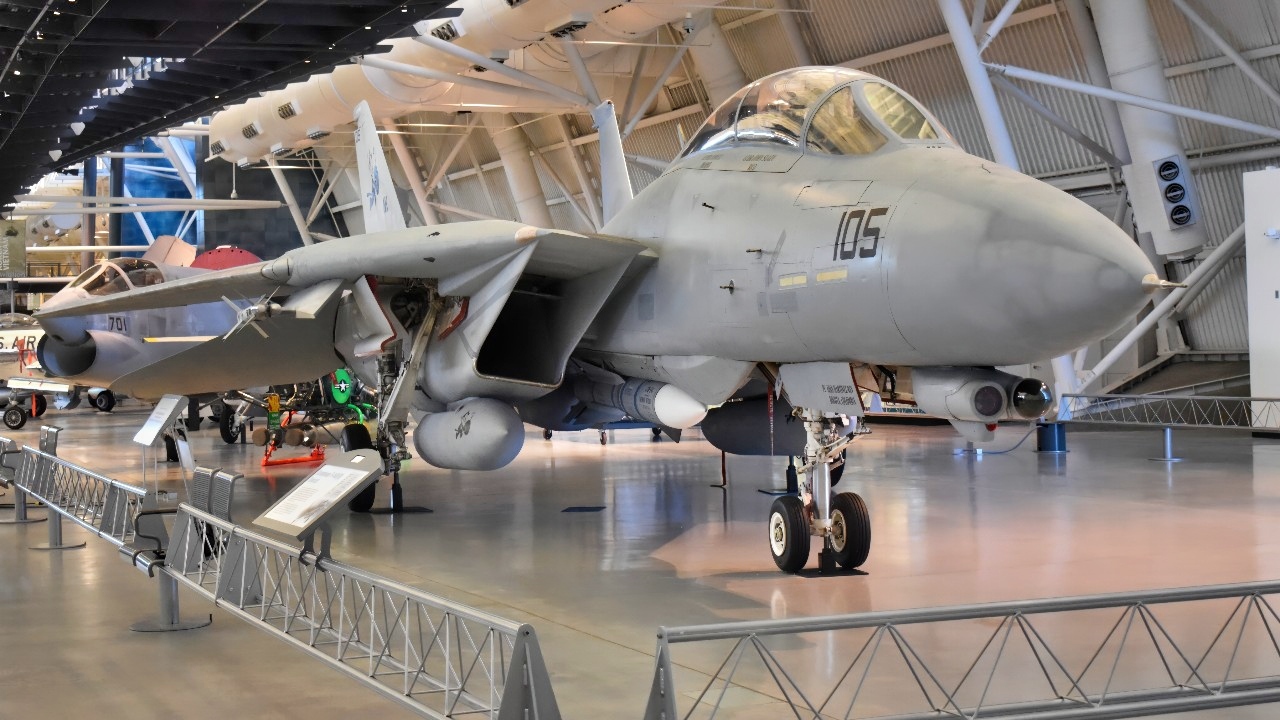National Security Journal Visited the F-14 Tomcat – Key Points and Summary – A tribute to the iconic F-14 Tomcat explores its legacy through interviews with a former “Top Gun” pilot and a Smithsonian curator.
-The former F-14 pilot, Christopher Browne, recounts the “sheer power” of carrier launches and a harrowing nighttime ejection over water.
-Smithsonian curator Dr. Michael Hankins praises the F-14’s range and agility but notes that its high cost and maintenance demands ultimately led to its retirement.
-The conversation also fact-checks the movie Top Gun, revealing that while Goose’s death was plausible, Maverick’s arrogant attitude would not be tolerated in the real, teamwork-focused program.
We Came So Close to the F-14 Tomcat, We Could Reach Out and Touch It
The F-14 Tomcat needs little in the way of introduction. It is an iconic fighter jet that experts and amateurs alike know much about. The Tomcat certainly has many fanboys and fangirls. I aimed to attend the US Naval Academy and become a naval aviator, with the goal of flying a Tomcat after completing flight school. I even had my squadron picked out—the fun-loving, lethal, and combat-hardened Jolly Roger Squadron (VFA-103).
Unfortunately, the naval brass had other plans for me. I received the Congressional nomination for the academy, but not the appointment. While disappointed, I tried another route in the military and ended up becoming a US Army Infantry officer years later.
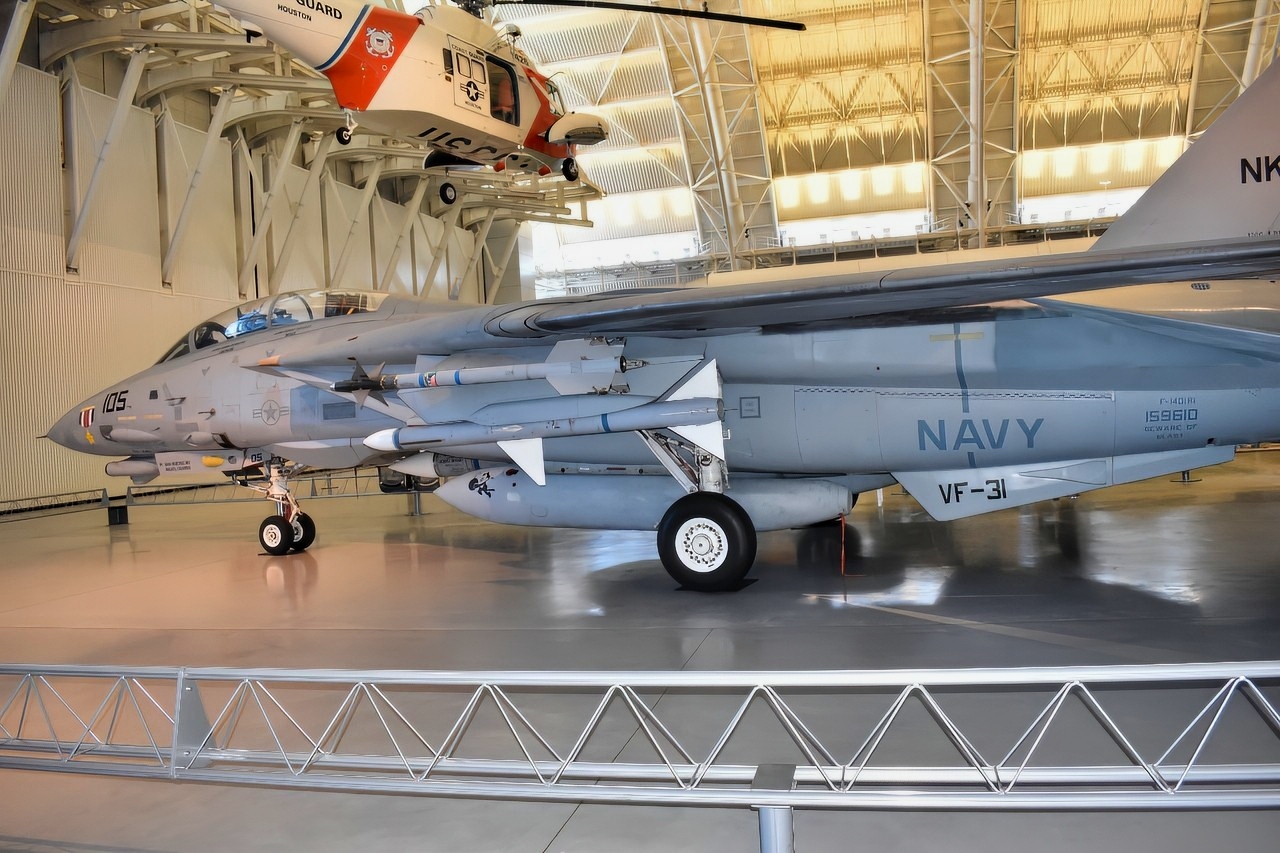
F-14 Tomcat at Steven F. Udvar-Hazy Center. Image by Brent M. Eastwood for National Security Journal.
Was the Tomcat Retired Too Early?
But the F-14 Tomcat fascination still stayed with me. I remember the day it was retired, on September 22, 2006, after about 37 years of exemplary service. Was it decommissioned too early? After all, the Navy needed all the fighter jets it could get during the Global War on Terror. The wars in Iraq and Afghanistan were raging, and having more combat-tested strike airplanes would have been a big help.
Variable Sweep-Wings Made for an Electrifying Jet
The F-14 is a supersonic, twin-engine, variable-sweep-wing multi-role fighter. The variable sweep wings are what make the F-14 so great. This attribute resulted in a versatile and agile warbird. The ability to speed along at high speeds and dip down to lower altitudes at extreme velocity made it perfect for launching and landing on aircraft carriers. Plus, those wings were a great advantage during dogfights.
Maverick Had His Backseat Sidekick and RIO Goose
The F-14 also had a Radar Intercept Officer (RIO) who handled the sensors, assisted the pilot with navigation, identified and tracked targets, and controlled the weapons systems. “Goose” served as the RIO in the original Top Gun movie.

F-14 Cockpit at F-14 Tomcat at Steven F. Udvar-Hazy Center. Image taken on September 5, 2025, by National Security Journal.
The Tomcat was loaded with munitions—a deadly supply of both missiles and bombs. The Smithsonian Air and Space Museum described it well.
What Kind of Weapons Loadout Did the Tomcat Have?
“As a Strike Fighter, the Tomcat is capable of deploying an assortment of air-to-ground ordnance [MK-80 series general purpose bombs, laser-guided bombs, and JDAMs] in various configurations, while simultaneously carrying the AIM-7, AIM-9 and AIM-54 air-to-air missiles,” according to the Air and Space Museum.
I Got to Tour the F-14 Tomcat Outside of Washington, DC
To see the Tomcat for myself, I ventured out to the Air and Space Museum near Dulles International Airport in the Washington, DC, metro area. The Steven F. Udvar-Hazy Center in Manassas, Virginia, has every airplane and spacecraft that you can imagine.
All the video and photos in this article are from that visit, back on September 5, 2025.
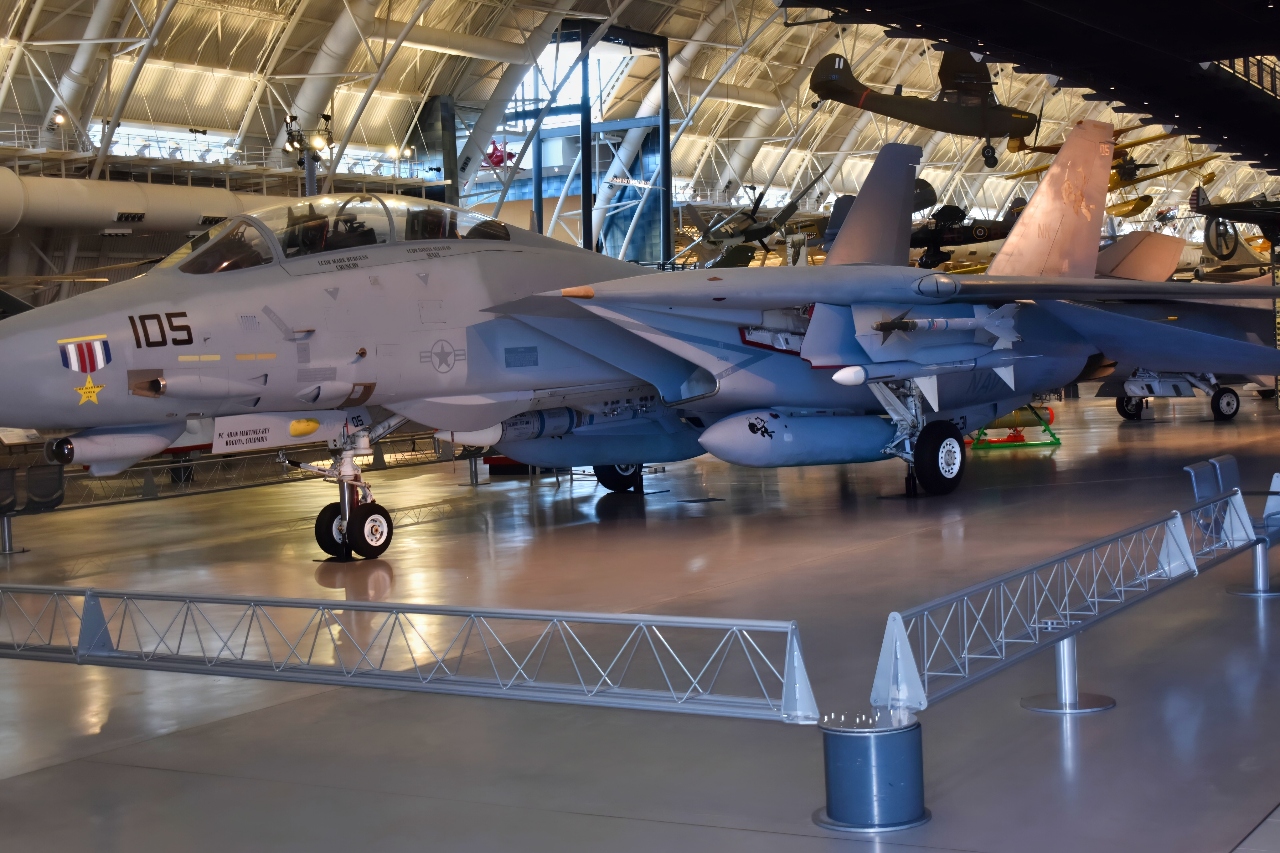
F-14D Tomcat. Image Taken By National Security Journal.
The museum has a modified F-14D(R) on display. This warbird was part of the VF-31 squadron from the USS John F. Kennedy carrier. This is the same Tomcat that shot down a Libyan MiG-23 Flogger in 1989. An AIM-7 Sparrow missile destroyed the Flogger. Another Tomcat splashed a Flogger with an AIM-9 Sidewinder during the same mission.
Straight from the Mouth of a Real Top Gun F-14 Aviator
I was fortunate to interview an F-14 pilot who actually flew the Tomcat that is on display at the Air and Space Museum in Virginia.
Christopher Browne is the John and Adrienne Mars Director of the museum. Browne flew Tomcats off the USS Dwight D. Eisenhower during his career. He collected over 1,400 flight hours and more than 300 carrier landings, and he is a graduate of the US Navy’s “Top Gun” Fighter Weapon School. You couldn’t ask for a better aviator to converse with.
I asked Browne what he liked best about flying the Tomcat. “I loved the sheer power of the F-14. Launching off the ship in Zone 5 full afterburner [especially at night] had no equal.”
But Browne explained there were times when the F-14 could be a handful. “The earlier versions of the F-14 equipped with the Pratt & Whitney TF-30 engines were prone to compressor stalls [and usually at the most inopportune moment]. Pilots ended up having to ‘fly the engine’ and not the aircraft. This was corrected in later variants that were equipped with the General Electric 400 engines.”
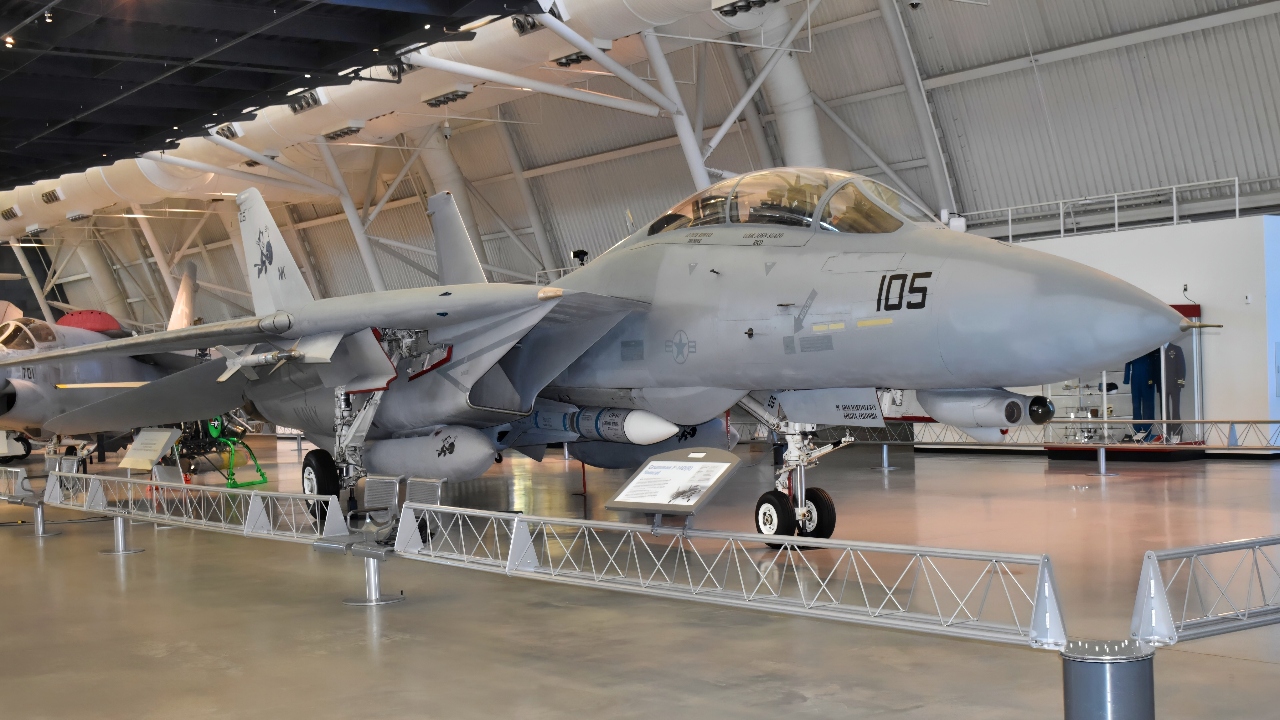
The Mighty F-14 Tomcat. Image Credit: National Security Journal. Image taken by Brent M. Eastwood.
I was eager to learn more, and I posed a question that may not have brought up great memories for the naval aviator turned museum director. I wanted to know the scariest or most harrowing experience he had while flying the Tomcat.
“I had to eject from an F-14 I was flying [at night and over water] when a hydraulic line failed and caused an uncontrollable fire.”
Browne was being modest, brief, and matter-of-fact about that tale. He is the utmost and consummate professional who never lets anyone see him sweat. This incident must have been extremely worrisome, though. He must have noticed a warning light and began to try to investigate what was going wrong with help from his RIO. The countermeasures must not have worked, and the cockpit alerted them to overheating that turned into flames that couldn’t be extinguished.
Browne and his RIO were forced to punch out. Aviators train on egress in a water situation, but the real thing must have been a shock. They must have hit the ocean hard in the black of night. Fortunately, search and rescue found Browne and his RIO, and they lived to fly again – likely very happy they came back alive.
That was a good ending, but I have more to tell you about the F-14. I also interviewed Dr. Michael Hankins. Hankins is the Curator of the US Air Force, Navy, and Marine Corps post-World War II Aviation at the Air and Space Museum at Dulles.
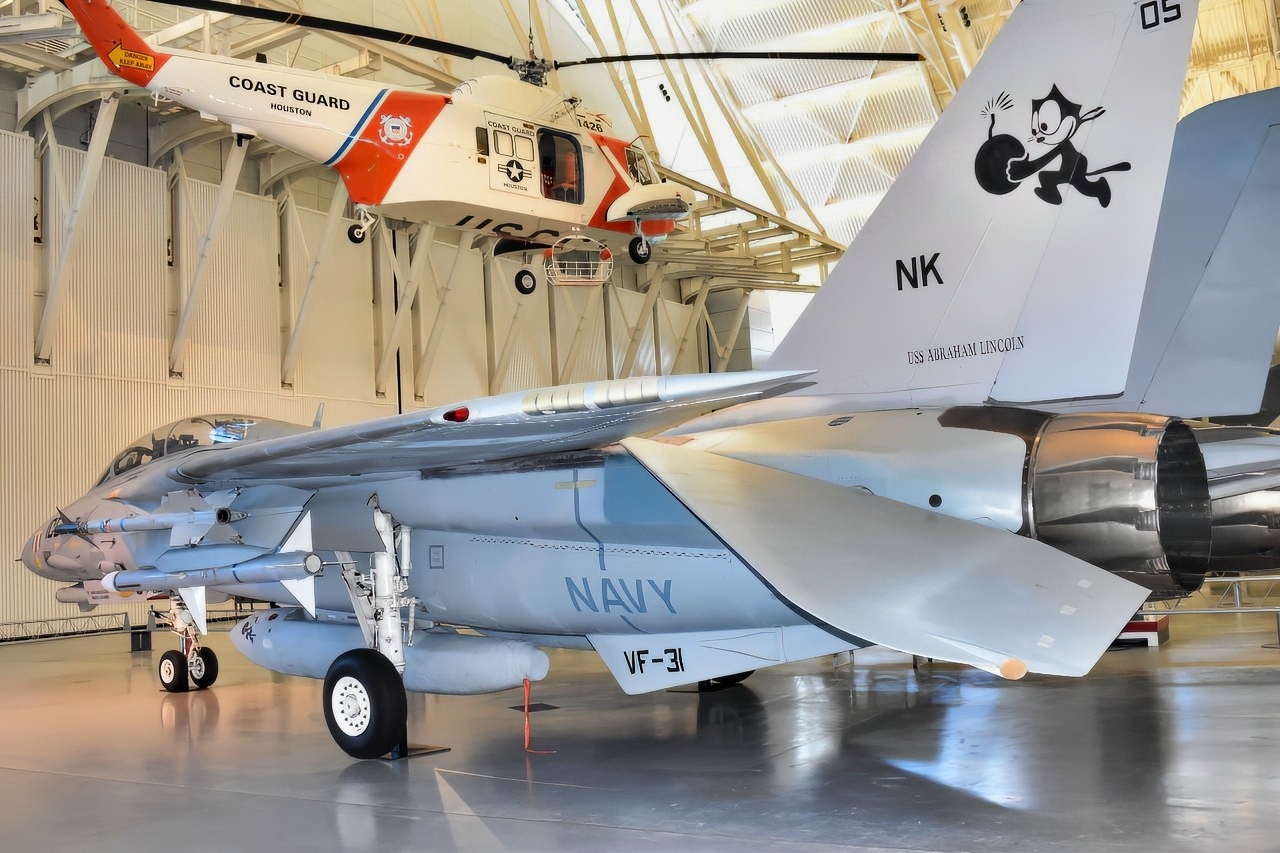
F-14 Tomcat Image by Dr. Brent M. Eastwood/National Security Journal.
I first asked Hankins what he thought were the pros and cons of the F-14.
“In my opinion, the biggest advantages of the F-14 are: range, maneuverability, and adaptability/versatility. On the range issue, the main design driver from early on was maximizing the plane’s ability to protect carriers from incoming air threats [Soviet planes or missiles]. A significant aspect of achieving this was integrating a very long-range radar system with a very long-range missile [the Phoenix]. This allowed the F-14 to ideally fire on up to six separate targets at once from about 100 miles away or more. The airframe design and the variable sweep wing give the plane great maneuverability—it’s very agile and thus was adept at the air-to-air combat role. The plane also proved very adaptable—it was used very effectively as a photoreconnaissance platform, and, in the early 2000s, was modified for ground attack, in which it was quite successful too,” Hankins said.
“For disadvantages, the biggest ones in my opinions were cost and maintenance. The aircraft was difficult and costly to maintain. There was also a frequent issue with earlier models of the F-14, in which the engines might have been a bit underpowered, leading to some tricky flight characteristics and some accidents. Later models of the airplane addressed this with engine upgrades,” Dr. Hankins said.
Recall that I had concerns earlier that the F-14 may have been retired too early. Dr. Hankins replied that the F-14 had a long and substantial service life, but it came with a high price tag to keep it in the air.
“This is purely a matter of opinion—many Tomcat pilots and fans of the aircraft would say yes [it was retired too early], but those concerned with costs would probably say no. In any case, it had a long service life of about 37 years in operational use, which is quite a long time for a fighter aircraft,” Hankins replied.

F-14 Missiles at the Smithsonian Outside of DC. National Security Journal Photo. All Rights Reserved.
And you know that I couldn’t leave the interview without asking about the Top Gun movies. Hankins said the death of Goose in the film could have actually happened in that manner, although it would have been a rare occurrence. Also, Maverick may not have been welcome at the real Top Gun.
“We do always get questions about the films, which is great, it’s nice to have such a powerful cultural touchstone to use as a touch-off point to help visitors connect to the history. A couple of things that come to mind for me on this are, first, the accident in which Goose lost his life, although not based on a specific incident, is not too dissimilar from some real accidents that did happen,” Hankins said.
“Because of how the canopy on some models of the Tomcat separated during ejection, in a very specific spin condition, it could have been possible for the canopy to not clear fast enough, causing the pilot to hit the canopy. It would be extremely rare, though,” Hankins said.
“But the bigger point that I have always heard from actual TOPGUN graduates is that Maverick’s arrogant loner attitude wouldn’t be tolerated during the actual exercises and training briefings. Of course, many naval aviators have reputations for having a little bit of that ‘fighter jock’ swagger, but in the briefing rooms and in the air, it’s all about teamwork. Going through the TOPGUN program requires that pilots check their egos at the door and learn to trust each other and work well together. Also, there are no locker rooms at TOPGUN,” Hankins explained.
F-14 Tomcat: The Bottom Line
The F-14 is an unforgettable airplane that we love covering. It’s great to be so close to the jet that you can reach out and touch it. If you are ever in the Washington, DC area, you should check out the Smithsonian Air and Space Museum by the Dulles International Airport. You can see the F-14 in all its glory.
About the Author: Brent M. Eastwood
Brent M. Eastwood, PhD is the author of Don’t Turn Your Back On the World: a Conservative Foreign Policy and Humans, Machines, and Data: Future Trends in Warfare plus two other books. Brent was the founder and CEO of a tech firm that predicted world events using artificial intelligence. He served as a legislative fellow for US Senator Tim Scott and advised the senator on defense and foreign policy issues. He has taught at American University, George Washington University, and George Mason University. Brent is a former US Army Infantry officer. He can be followed on X @BMEastwood.
More Military
F-22 vs. J-20: Who Wins a Stealth Fighter Dogfight?
SpaceX’s Starship Has Some People in Florida Pretty Angry
Vanguard: Meet the Very Last Battleship Ever Built
JAS 39: The Best Fighter Jet Not Named F-22 or F-35? You Decide


